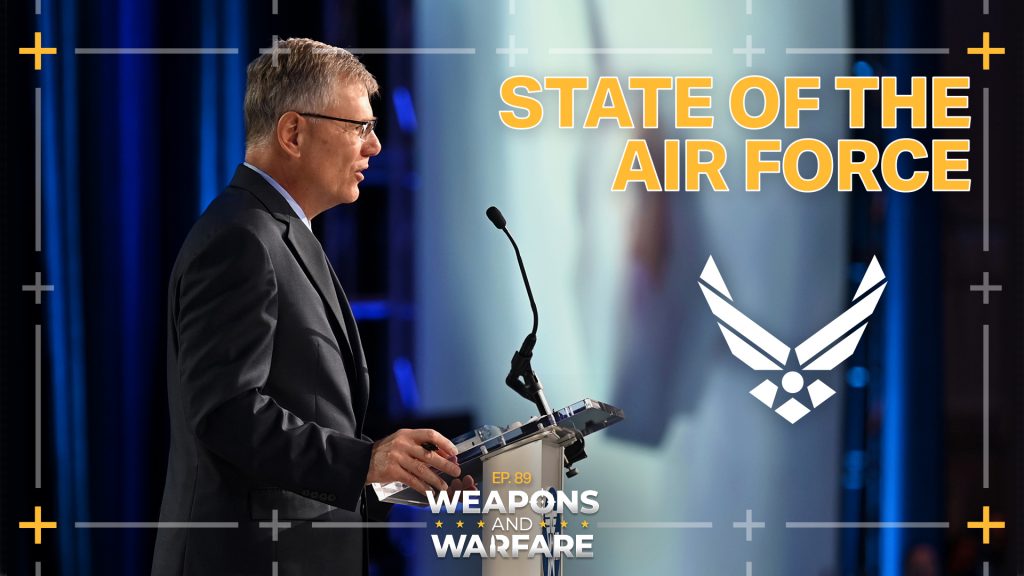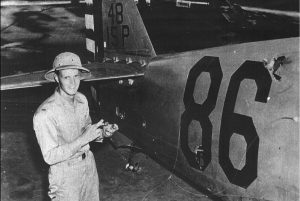US Air Force leader wants to ‘maintain dominance’

This week on Weapons and Warfare, host Ryan Robertson is in National Harbor, Maryland, for the Air & Space Forces Association’s Air, Space & Cyber 2025 event. Straight Arrow News checks in with Secretary of the Air Force Dr. Troy Meink, to discuss his vision for modernization and readiness.
We also hear from outgoing Chief of Staff Gen. David Allvin, who wants to ensure the branch is on the right course as he prepares to retire.
Senior Air Force leaders gathered at the Air, Space & Cyber 2025 conference to outline the branch’s strategic direction, emphasizing innovation, modernization and readiness in the face of growing global threats.
In his first major address since confirmation, Air Force Secretary Meink delivered a clear message: The United States must maintain its military advantage through rapid innovation.
“Our job is to maintain that dominance going forward,” Meink said. “The only way we are going to maintain our advantage is to innovate faster than our adversaries.”
Meink, a veteran of the Air Force with extensive government service, highlighted the importance of building on existing capabilities. He pointed to modernization efforts such as the newly announced F-47 sixth-generation fighter, the B-21 bomber and upgrades to the B-52 fleet, including new engines and radar systems.
“When you watch what our adversaries are doing, unless you are moving faster than they are, they will overtake you,” Meink said. “It is innovation across the board.”
Gen. David Allvin, chief of staff of the Air Force, also addressed the crowd in what was likely his final public remarks before retirement. Allvin acknowledged areas for improvement but praised the service’s performance during Operation Midnight Hammer, a large-scale strike on Iran’s nuclear infrastructure.
“This was the largest operational employment of B-2s in their history,” Allvin said. “Over 100 aircraft, thousands of man-hours in planning and execution. We reestablished deterrence, and we were ready to go.”
The June 22 strike reportedly delivered nearly half a million pounds of ordnance. While the long-term impact on Iran’s nuclear program remains unclear, Allvin noted that the operation helped end a 12-day conflict.
“About 30 hours after this, President Trump declared a ceasefire,” Allvin said. “We did not have a surge or mobilization. We were ready.”
Allvin stressed the need for urgency and agility across the force, referencing the Air Force’s mission statement.
“Our mission does not say ‘Fly, fight and be relevant,’” he said. “It says ‘Fly, fight and win air power, anytime, anywhere.’ That is the pace we have to move.”
He cited the F-47 program as an example of that urgency, noting that manufacturing had already begun just months after the aircraft’s announcement. The Air Force aims to have the first F-47 flying by 2028.
As Allvin prepares to retire after 39 years of service, the White House has nominated Gen. Ken “Cruiser” Wilsbach to succeed him. Wilsbach, who most recently led Air Combat Command, had planned to retire after 40 years but reversed course to accept the nomination. His appointment is pending Senate confirmation.
The Air, Space & Cyber conference continues to serve as a platform for military leaders to share insights and strategies, reinforcing the Air Force’s commitment to innovation and operational excellence.
Battling drones and missiles with the BRAWLR
Modern warfare demands adaptable solutions. For this week’s weapon of the week, Sierra Nevada Corporation (SNC) delivers just that with the BRAWLR.
Short for Battery Revolving, Advanced Weapons Launcher, Reconfigurable, the BRAWLR is a modular, multi-role weapons platform designed to counter a wide range of aerial threats. Developed by SNC, the team built the system to adapt quickly to evolving battlefield needs.
At its core, the BRAWLR is a one-stop launcher for drone defense. Engineers designed it to fire Advanced Precision Kill Weapon System (APKWS) rockets. These laser-guided munitions offer a cost-effective alternative to traditional air defense missiles. By pairing inexpensive Hydra 70 rockets with precision guidance kits, the system delivers accurate firepower without the high price tag of multi-million-dollar interceptors.
But the BRAWLR’s real strength lies in its flexibility.
Troops can reconfigure the launcher to carry different payloads, including air-to-air missiles like the AIM-9 Sidewinder. It also supports a range of sensors and targeting systems, including forward-looking infrared (FLIR) cameras and advanced antenna arrays.
SNC designed the system with NATO and allied partners in mind — particularly those facing a growing threat from drones and fast-moving aircraft. While SNC declined to name specific customers, the company confirmed interest from several European defense partners.
The BRAWLR’s modular design allows it to engage a wide spectrum of targets, from small commercial drones to larger Group 5 UAVs and even manned jets
As drone warfare continues to evolve, platforms like the BRAWLR offer a scalable, adaptable solution for modern air defense — one that balances cost, capability, and rapid deployment.
You can subscribe to the Weapons and Warfare podcast on the platform of your choosing here.
The post US Air Force leader wants to ‘maintain dominance’ appeared first on Straight Arrow News.





